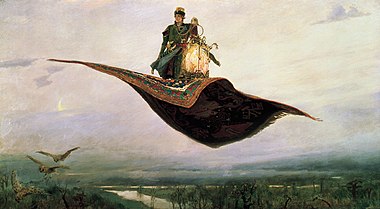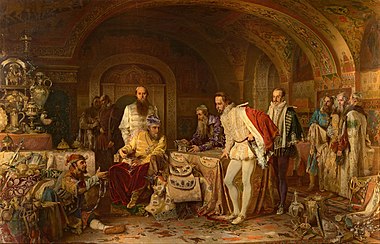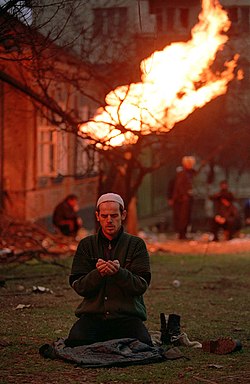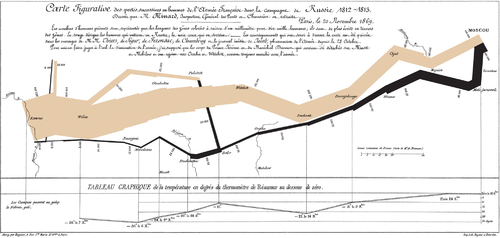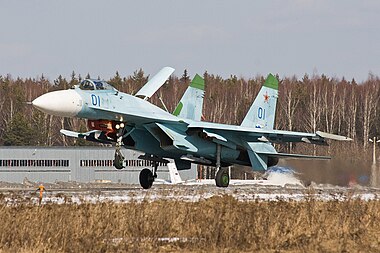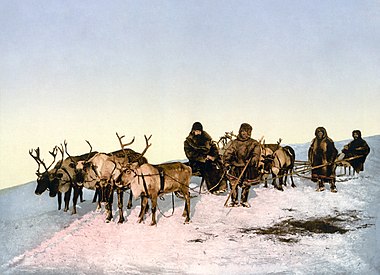Portal:Russia/Selected picture: Difference between revisions
Content deleted Content added
update instructions per Special:Diff/989855480 |
|||
| (One intermediate revision by the same user not shown) | |||
| Line 1: | Line 1: | ||
<noinclude> |
|||
__TOC__ |
|||
{{Documentation|Template:Portal pictures/portal doc}} |
|||
== Usage == |
|||
One can use {{tlx|Portal POTD|<var>YYYY-MM-DD</var>}} for images selected as [[Wikipedia:Picture of the day]] (examples: [[Portal:Russia/Selected picture/9|#9]] and [[Portal:Russia/Selected picture/20|#20]]) or {{tl|Selected picture}} for other images. |
|||
# Add a new Selected picture to the next available subpage. |
|||
# Update parameter {{para|max}} to new total for its {{tl|Random portal component}} on the main page. |
|||
== Selected pictures list == |
== Selected pictures list == |
||
</noinclude>{{Portal pictures<!-- |
|||
{{Numbered subpages|missing=link|max=30|SPAN=yes}} |
|||
add subpages of [[Template:POTD]] in the following list (sorted by date, grouped by year): |
|||
-->|2007-03-12|2007-04-05|2007-10-06|2007-12-23<!-- |
|||
-->|2008-01-03|2008-03-22|2008-06-24|2008-09-30|2008-10-15|2008-12-25<!-- |
|||
-->|<!-- |
|||
-->|2010-10-25<!-- |
|||
-->|2011-08-05<!-- |
|||
-->|2012-05-17<!-- |
|||
-->|2013-02-11|2013-05-24|2013-08-14<!-- |
|||
-->|<!-- |
|||
-->|2015-09-26<!-- |
|||
-->|2016-04-09<!-- |
|||
-->|<!-- |
|||
-->|<!-- |
|||
-->|<!-- |
|||
-->|<!-- |
|||
-->|2019-05-26<!-- |
|||
-->|2020-03-02|2020-03-09|2020-03-18|2020-05-20<!-- |
|||
-->|<!-- |
|||
-->|<!-- |
|||
-->|<!-- |
|||
to add a picture manually, use the format below: |
|||
-->|i1= |
|||
|title1= |
|||
|credit1= |
|||
|caption1= |
|||
|i2= |
|||
|title2= |
|||
|credit2= |
|||
|caption2= |
|||
|i3= |
|||
|title3= |
|||
|credit3= |
|||
|caption3= |
|||
|i4= |
|||
|title4= |
|||
|credit4= |
|||
|caption4= |
|||
|i5= |
|||
|title5= |
|||
|credit5= |
|||
|caption5= |
|||
|i6= |
|||
|title6= |
|||
|credit6= |
|||
|caption6= |
|||
|i7= |
|||
|title7= |
|||
|credit7= |
|||
|caption7= |
|||
|i8= |
|||
|title8= |
|||
|credit8= |
|||
|caption8= |
|||
|i9= |
|||
|title9= |
|||
|credit9= |
|||
|caption9= |
|||
|i10= |
|||
|title10= |
|||
|credit10= |
|||
|caption10= |
|||
<!-- ^ add new pictures above this line ^ |
|||
code for legacy subpages below: --> |
|||
|subpage=Selected picture |
|||
|subpagemax=4 |
|||
}}<noinclude> |
|||
[[Category:Russia portal|{{SUBPAGENAME}}]] |
[[Category:Russia portal|{{SUBPAGENAME}}]] |
||
</noinclude> |
|||
Revision as of 23:53, 21 November 2020
The Selected picture box on the portal chooses one of the following at random when displaying the page. Follow the instructions below for adding or nominating a new picture to the list.
Picture candidates
Feel free to add related featured pictures to the list. Nominate other pictures on the portal talk page.
- Pictures must be
- Free to use and hosted on Commons
- Of good quality (not blurred, grainy or discoloured)
- Interesting
- Relevant to an article or topic
To find appropriate pictures, use search box below:
Instructions
- For pictures, which appeared as picture of the day on the Main Page, just add the date in
YYYY-MM-DDformat to the list (please keep the list sorted). - For other pictures, use following parameters:
|iN= |titleN= |creditN= |captionN=
where N is the next unused number.
Selected pictures list
Artist: Viktor Vasnetsov
A painting depicting Ivan Tsarevich, one of the main heroes of Russian folklore, riding a magic carpet after having captured the Firebird, which he keeps in a cage. This work was Viktor Vasnetsov's first attempt at illustrating Russian folk tales and inaugurated a famous series of paintings on the themes drawn from Russian folklore.
Image from: Detroit Publishing Co. (1905 catalogue)
A photochrom of St Isaac's Square in St Petersburg, Russia from the 1890s, as seen from the dome of St Isaac's Cathedral towards Marie Palace. Behind the palace, the capital of the Russian Empire is seen all the way to the Trinity Cathedral. The square is dominated by the equestrian Monument to Nicholas I.
Artist: Boris Kustodiev
Maslenitsa, a 1919 painting depicting the carnival of the same name, which takes place the last week before Great Lent. The painting encompasses a broad range of things associated with Russia, such as snowy winter weather, a troika, an Orthodox church with onion domes. Painted in the aftermath of the October Revolution, the canvas was intended as a farewell to the unspoilt "Holy Russia" of yore.
Ivan Shishkin's Rye
Artist: Ivan ShishkinRye, by Ivan Shishkin (1878). Shishkin was a leading Russian landscape painter associated with the realistic Peredvizhniki movement. The painting represents boundless rye fields in the Central Black Earth Region. The canvas still hangs in the Tretyakov Gallery in Moscow.
Ivan the Terrible Showing His Treasury to Jerome Horsey
Artist: Alexander LitovchenkoAlexander Litovchenko's 1875 painting depicting Ivan IV of Russia seated in the Kremlin Armoury, his half-witted heir Fyodor standing behind, a group of distrustful boyars whispering at a distance, and the Tsar's jester in a skomorokh cap addressing the English diplomat Jerome Horsey. Horsey was a resident of the Russia Company in Moscow from 1572 to 1585.
Photo credit: Mikhail Evstafiev
A Chechen man prays during the First Battle of Grozny, January 1995. The flame in the background is coming from a gas pipeline which was hit by shrapnel.
This battle was the Russian army's invasion and subsequent conquest of the Chechen capital, Grozny, during the early months of the First Chechen War. The attack lasted from December 1994 to March 1995, resulted in the military occupation of the city by the Russian Army and rallied most of the Chechen nation around the separatist government of Dzhokhar Dudayev.
Image credit: Charles Joseph Minard
Charles Minard's Carte figurative (1869), which details the losses of men, the position of the army, and the freezing temperatures on Napoleon's disastrous 1812 invasion of Russia. Created in an effort to show the horrors of war, the graph "defies the pen of the historian in its brutal eloquence" and has been called the best statistical graphic ever drawn.
Artist: Ilya Repin
Sadko in the Underwater Kingdom, a painting by Ilya Repin depicting Sadko, a Russian folk hero of a bylina of the same name, though this painting depicts only one specific version of that tale. In this version, the Sea King wants Sadko to marry one of the many underwater beauties (daughters). However, if he chooses one of them he will remain under the sea forever. Instead he is supposed to pick an unremarkable servant girl -- pictured in the upper left hand side -- who will magically help him return to Novgorod and his human wife there. The story inspired both an opera and musical tableau.
Photo credit: Dmitry A. Mottl
A Sukhoi Su-27 from the Russian Knights aerobatic team on landing, Kubinka, Russia. The Su-27 is a jet fighter plane originally manufactured by the Soviet Union with long range, heavy armament, and very high agility. Its closest American counterpart is the F-15 Eagle.
Image credit: Detroit Publishing Co.
A late nineteenth-century photochrom of a reindeer sled, Arkhangelsk, Russia. Reindeer have been herded for centuries by several Arctic and Subarctic people including the Sami and the Nenets. They are raised for their meat, hides, antlers and, to a lesser extent, for milk and transportation.
Artist: William Simpson; Restoration: Adam Cuerden
On October 25, 1854, during the Battle of Balaclava in the Crimean War, British cavalry units charged heavily fortified Russian opposition, an action known as the Charge of the Light Brigade. By mischance, they attacked the wrong target, as the orders were unclear, and as a result suffered great casualties. Alfred, Lord Tennyson's famous poem made the charge a symbol of warfare at both its most courageous and its most tragic.
Photo: Dave Pape
A female Siberian tiger (Panthera tigris altaica), a subspecies of tiger native to Central Asia, and her cub. The Siberian tiger is the largest of the extant tiger subspecies as well as the largest felid, attaining 320 kg (710 lb) in an exceptional specimen. Considered an endangered subspecies, the wild population is down to several hundred individuals and is limited to eastern Siberia.
Photo: Sergey Krivchikov
The Sukhoi Su-30 is a twin-engine, two-seat supermanoeuverable fighter aircraft developed by Russia's Sukhoi Aviation Corporation. It is a multirole fighter for all-weather, air-to-air and air-to-surface deep interdiction missions. Its primary users are Russia, India, China, Venezuela, and Malaysia.
The Cathedral of Christ the Saviour is a church in Moscow, Russia, south-west of the Kremlin, which was consecrated in 1883. With an overall height of 105 metres (344 ft), it is the tallest Orthodox Christian church in the world.
Sukhoi Su-25 diagram
Diagram: AltoingLayout scheme of a Sukhoi Su-25 (details), a jet aircraft designed to provide close air support for the Soviet Ground Forces and used by various countries. Since production began in 1978, the Su-25 has seen combat in several conflicts, including the Soviet war in Afghanistan, the Iran–Iraq War, and the Russia–Georgia War.
Painting: Vasily Perov
Fyodor Dostoevsky (1821–81; depicted in 1872) was a Russian novelist, short story writer, essayist and philosopher. After publishing his first novel, Poor Folk, at age 25, Dostoyevsky wrote (among others) eleven novels, three novellas, and seventeen short novels, including Crime and Punishment (1866), The Idiot (1869), and The Brothers Karamazov (1880).
Photograph: Katsuhiko Tokunaga/SuperJet International
The Sukhoi Superjet 100 is a modern fly-by-wire twin-engine regional jet with 8 to 108 passenger seats. Development began in 2000; the aircraft had its maiden flight on 19 May 2008 and entered commercial service on 21 April 2011. This aircraft is seen flying off the coast of Italy near Sanremo.
Photograph: Аркадий Зарубин
Balzhinima Tsyrempilov is a World Cup-winning and former world number-one archer from Russia. He has competed in both the 2004 and 2008 Summer Olympics, though he has not medalled.
Photograph credit: Andrew Shiva
An aerial view of the Field of Mars, a large park in central Saint Petersburg, Russia, pictured in 2016. It is named after Mars, the Roman god of war. The park's history goes back to the 18th century, when it was converted from bogland and named the Grand Meadow. Later, it was the setting for celebrations to mark Russia's victory over Sweden in the Great Northern War. Its next name, the Tsaritsyn Meadow, appears after the royal family commissioned Francesco Bartolomeo Rastrelli to build the Summer Palace for Empress Elizabeth. It became the Field of Mars during the reign of Paul I. Towards the end of the 18th century, the park became a military drill ground, where they erected monuments commemorating the victories of the Russian Army and where parades and military exercises took place regularly. After the February Revolution in 1917, the Field of Mars became a memorial area for the revolution's honoured dead. In the summer of 1942, as the city was besieged by the German army in the Siege of Leningrad, the park was covered with vegetable gardens to supply food. An eternal flame was lit in the centre of the park in 1957, in memory of the victims of various wars and revolutions.
Painting credit: Boris Kustodiev
The Portrait of Chaliapin is an oil-on-canvas painting by Boris Kustodiev, produced in 1921. Feodor Chaliapin was a Russian opera singer; possessing a deep and expressive bass voice, he enjoyed an important international career at major opera houses. He is depicted here wearing an expensive fur coat, which had come from a Soviet warehouse containing items confiscated from rich people during the Russian Revolution, and which he had received in lieu of payment for a performance. The background shows festivities at the traditional folk holiday of Maslenitsa. Dressed in a smart suit and holding a cane, Chaliapin is portrayed as having risen above his contemporaries. His favourite dog is at his feet and, at the bottom left, his two daughters stroll on the festive square in front of a poster promoting his concert. This copy of the painting is in the collection of the Russian Museum in Saint Petersburg.
Photograph credit: Arto Jousi; restored by Adam Cuerden
Yuri Gagarin (9 March 1934 – 27 March 1968) was a Soviet Air Forces pilot and cosmonaut who became the first human to journey into outer space; his capsule, Vostok 1, completed a single orbit of Earth on 12 April 1961. Gagarin became an international celebrity and was awarded many medals and titles, including Hero of the Soviet Union, his nation's highest honour. In 1967, he served as a member of the backup crew for the ill-fated Soyuz 1 mission, after which the Russian authorities, fearing for the safety of such an iconic figure, banned him from further spaceflights. However, he was killed the following year, when the MiG-15 training jet that he was piloting with his flight instructor Vladimir Seryogin crashed near the town of Kirzhach.
This photograph of Gagarin, dated July 1961, was taken at a press conference during a visit to Finland approximately three months after his spaceflight.
Photograph credit: NASA; retouched by Coffeeandcrumbs
Alexei Leonov (1934–2019) was a Soviet cosmonaut, Air Force major general, writer, and artist. On 18 March 1965, he became the first human to conduct a spacewalk, exiting the capsule during the Voskhod 2 mission for 12 minutes and 9 seconds. At the end of the spacewalk, his spacesuit had inflated in the vacuum of space to the point that he had great difficulty re-entering the airlock, forcing him to open a valve to deflate his suit. His second trip into space took place ten years later, when he was commander of Soyuz 19, the Soviet half of the 1975 Apollo–Soyuz Test Project, the first joint space mission between the Soviet Union and the United States. The crater Leonov on the far side of the Moon is named after him.
This picture shows Leonov photographed in 1974, wearing a lapel pin with a version of the emblem for the Apollo–Soyuz Test Project, which was then in development.
Photograph credit: Andrew Shiva
Saint Michael's Castle is a former royal residence in the historic centre of Saint Petersburg, Russia. It was built for Emperor Paul I between 1797 and 1801, and named after Saint Michael, the patron saint of the royal family. Constructed like a castle around a small octagonal courtyard, the four facades were built in different architectural styles, including French Classicism, Italian Renaissance and Gothic. The emperor was assassinated in the castle forty days after taking up residence. After his death, the imperial family returned to the Winter Palace and the building was transferred to the Russian Army's Main Engineering School. In 1990, it became a branch of the Russian Museum, and now houses its portrait gallery.
Portal:Russia/Selected picture/1
Sergey Prokudin-Gorsky was a Russian pioneer of color photographer. This view of Lugano was most likely taken in 1909.
Although James Clerk Maxwell made the first color photograph in 1861, the results were far from realistic until Prokudin-Gorsky perfected the technique with a series of improvements around 1905. His process used a camera that took a series of monochrome pictures in rapid sequence, each through a different colored filter. Prokudin-Gorskii then went on to document much of the country of Russia, travelling by train in a specially equipped darkroom railroad car.
Portal:Russia/Selected picture/2
This photo of the Nilov Monastery on Stolobny Island in Tver Oblast, Russia, was taken by Sergey Prokudin-Gorsky in 1910 before the advent of colour photography. His process used a camera that took a series of monochrome pictures in rapid sequence, each through a different coloured filter. By projecting all three monochrome pictures using correctly coloured light, it was possible to reconstruct the original colour scene.
Portal:Russia/Selected picture/3
An early colour photograph of the Emir of Bukhara, Mohammed Alim Khan, in 1911, taken by Sergey Prokudin-Gorsky as part of his work to document the Russian Empire from 1909 to 1915. Alim Khan, a direct descendant of Genghis Khan, was the last emir of the Manghud dynasty. He reigned from 1911 to 1920, fleeing to Afghanistan when the Bolsheviks annexed Bukhara and proclaimed the Bukharan People's Soviet Republic.
Portal:Russia/Selected picture/4

Credit: This image comes from Gallica Digital Library and is available under the digital ID btv1b6926750k/f1
Ilya Ilyich Mechnikov is the Russian scientist who discovered phagocytes and won the 1908 Nobel Prize in Physiology or Medicine.

